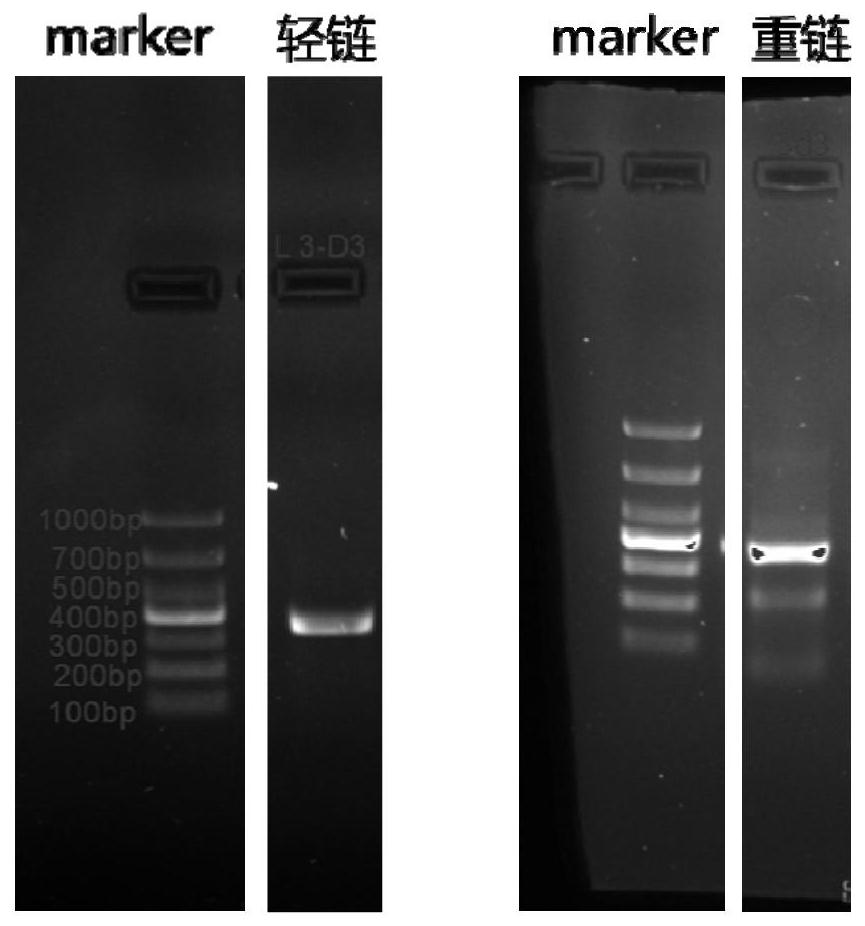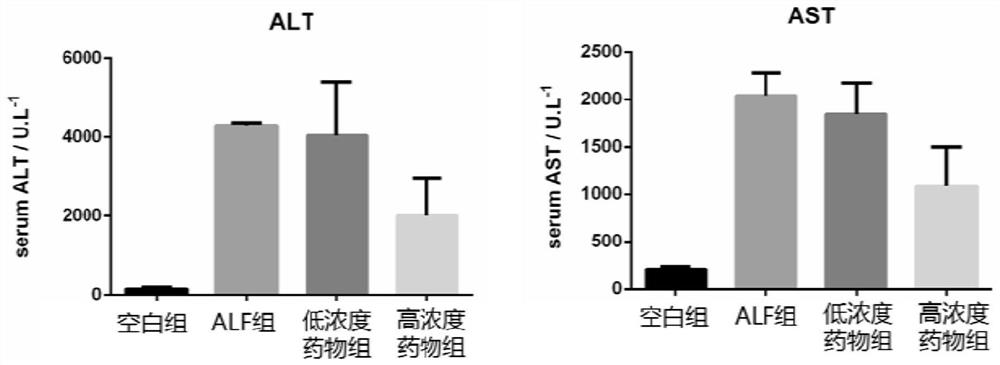Anti-human CXCL-2 monoclonal antibody 3-D3 as well as coding gene and application thereof
A technology of monoclonal antibody and coding gene, applied in application, antibody, genetic engineering, etc., can solve the problem of low antibody affinity
- Summary
- Abstract
- Description
- Claims
- Application Information
AI Technical Summary
Problems solved by technology
Method used
Image
Examples
Embodiment 1
[0052] Embodiment 1: the construction of hybridoma cell line
[0053] 1. Materials
[0054] DNA immune adjuvant was purchased from Sigma; fetal bovine serum and PRMI1640 medium were purchased from Gibco; SP2 / 0 cells were purchased from ATCC; BALB / c mice were provided by the Experimental Animal Center of Zhejiang University.
[0055] 2. Method:
[0056] (1) Plasmid construction
[0057] Primers were designed according to the CXCL-2 gene sequence checked on NCBI, and the human cDNA was used as a template to amplify the CXCL-2 gene DNA sequence, which was constructed on the pcDNA3.1 plasmid by molecular biology methods.
[0058] (2) Immunization of mice
[0059] BALB / c mice aged 4-6 weeks were selected, and the constructed CXCL-2 gene recombinant plasmid was dissolved in PBS and an equal volume of adjuvant, mixed and emulsified, and subcutaneously and intraperitoneally multi-point immunized. Every 2 weeks after the first immunization, the same dose of plasmid mixed with adjuv...
Embodiment 2
[0066] Example 2: Antibody subclass identification and stability test
[0067] The subclass identification of the antibody was carried out according to the instructions of the antibody subclass identification kit, and the result was that the heavy chain was IgG1 type, and the light chain was Kappa type.
[0068] The hybridoma cell line was continuously subcultured in vitro for 3 months, and the antibody titer in the supernatant was determined; the frozen hybridoma cell line was recovered after 4 months, and the antibody titer in the supernatant was detected, and no significant changes occurred. Changes, indicating that the obtained antibody-producing hybridoma cell line has stable performance.
Embodiment 3
[0069] Example 3: Anti-CXCL-2 monoclonal antibody inhibits neutrophil migration experiment
[0070] 1. Materials
[0071] 2. Methods and Results
[0072] (1) Matrigel plate: Dilute it with BD Matrigel 1:8, coat the upper chamber surface of the bottom membrane of the Transwell chamber, place at 37°C for 30 minutes to polymerize the Matrigel into a gel, and hydrate the basement membrane before use.
[0073] (2) Preparation of cell suspension
[0074] (3) Cell inoculation
[0075] Add 100ul of decellularized suspension to the Transwell chamber, generally add 600ul of medium containing 20% FBS to the lower chamber of a 24-well plate, and culture for 24 hours
[0076] (4) Results statistics. Take out the Transwell chamber, discard the culture medium in the well, wash twice with calcium-free PBS, fix with formaldehyde for 30 minutes, and air-dry the chamber properly. Stain with 0.1% crystal violet for 20 minutes, gently wipe off the upper layer of unmigrated cells with a cott...
PUM
 Login to View More
Login to View More Abstract
Description
Claims
Application Information
 Login to View More
Login to View More - R&D Engineer
- R&D Manager
- IP Professional
- Industry Leading Data Capabilities
- Powerful AI technology
- Patent DNA Extraction
Browse by: Latest US Patents, China's latest patents, Technical Efficacy Thesaurus, Application Domain, Technology Topic, Popular Technical Reports.
© 2024 PatSnap. All rights reserved.Legal|Privacy policy|Modern Slavery Act Transparency Statement|Sitemap|About US| Contact US: help@patsnap.com










